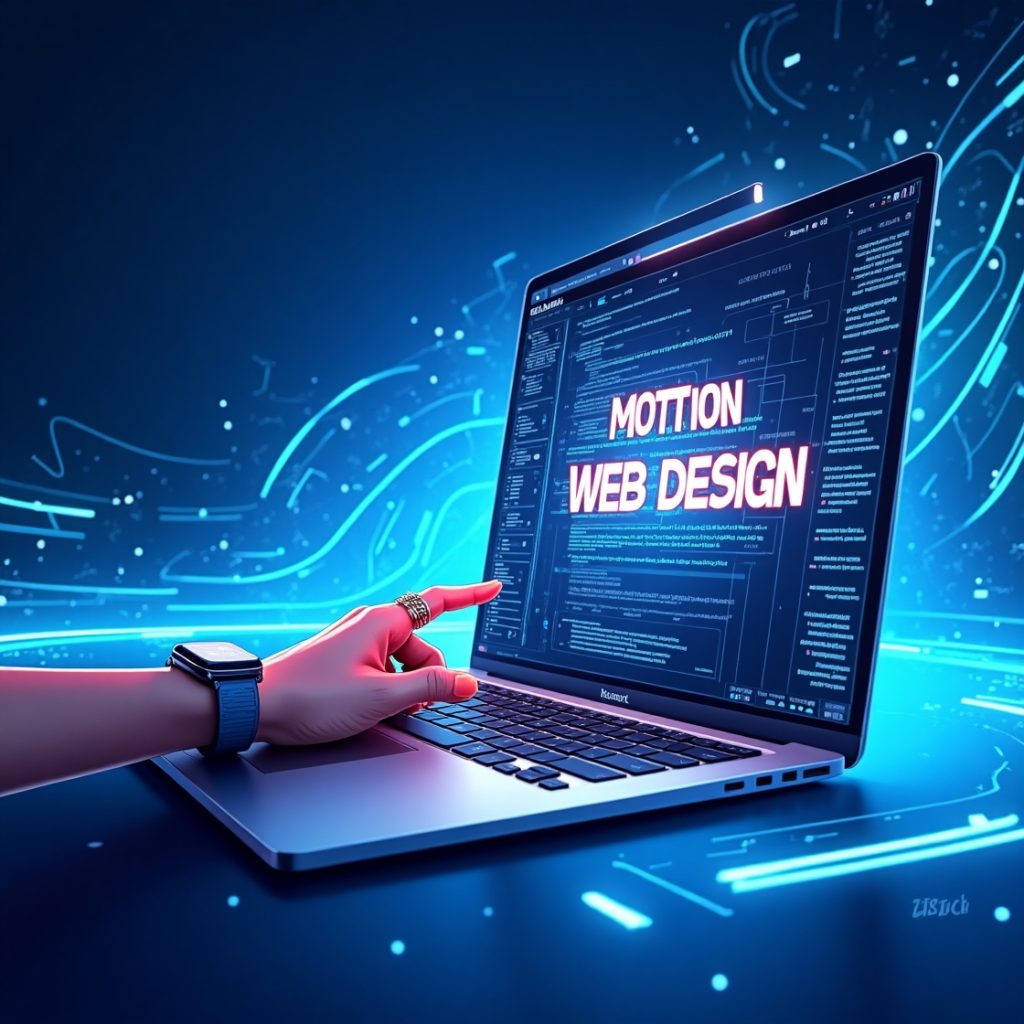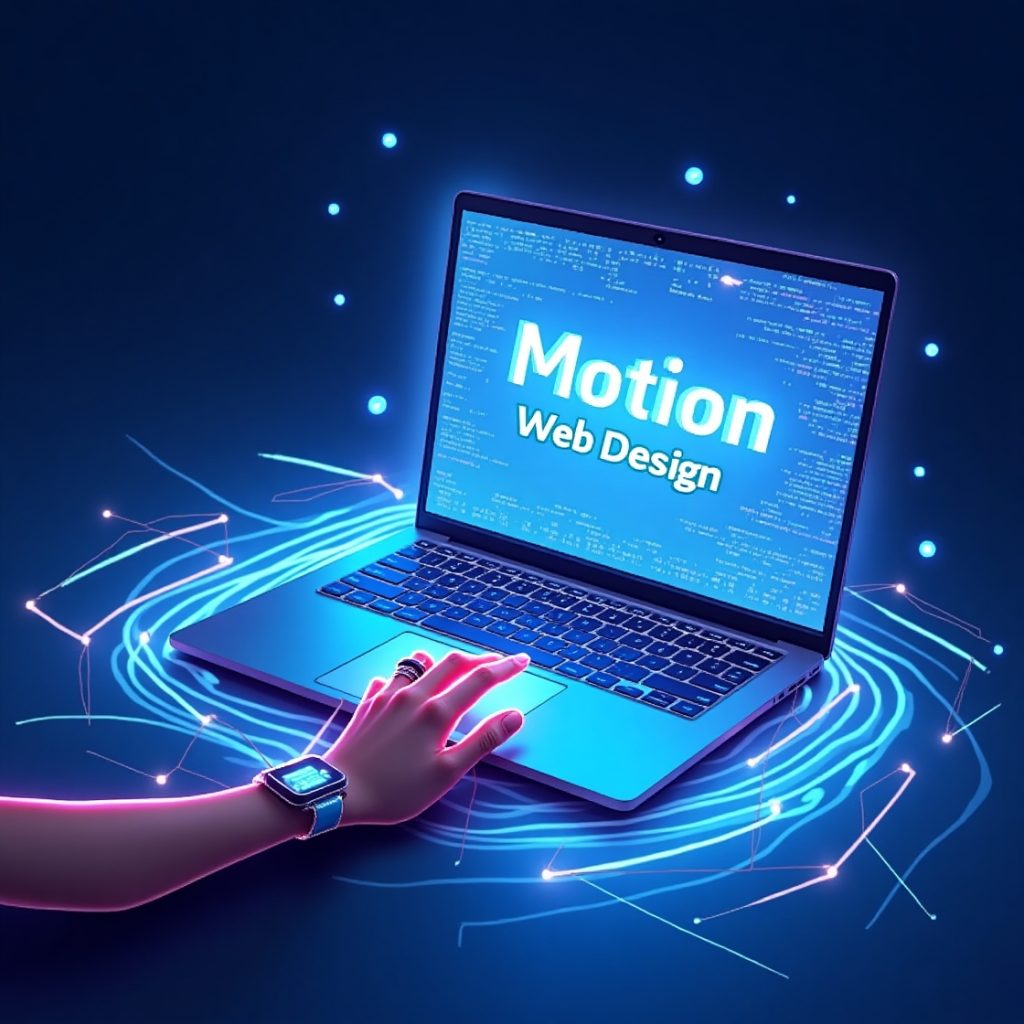Understanding the Basics of Motion Web Design
Before trying the tools and tutorials, it is necessary to learn about motion web design. In short, motion web design uses animation and transitions to improve user experience and “bring the website alive”. Just a touch extra to make it a little more enjoyable while not functional. Motion helps grab attention, offers feedback, and creates that connective tissue that allows users to experience the interface seamlessly.
This is not all about simply making things move. Motion design properly is all about using the right touch in order to deliver good meaning. For example, when a button shakes, it lets you know that you have done your action, while when the page scrolls smoothly, you understand better the layout of the page. These little things can change the whole idea of how a site is navigated.
When you are just a beginner, understanding UI and UX principles will take you far. Sites like UX Collective and Smashing Magazine often cover many topics that form the foundation for motion design. The sites provide insight about the reasons behind using animations, how they impact user behavior, and the appropriate timing of using them. Understanding these basic concepts will help you grasp things better when you start learning tools or techniques.
That is the foundation on which a wise one will be able to stand and optimize the tutorials and resources that they discover later. It is like learning the rules before learning how to break them; you will get a lot more out of your design journey.
Key Design Principles That Support Motion

Moving a website will not only be focused on aesthetics, but really, on strategy. Before you even get familiar with the animation tools, make yourself comfortable with the principles that guide motions; these include timing, easing, feedback, and hierarchy.
Determines timing determines duration of animation. Fast definitely misses, weirdly too slow; it’s perceived a delay. Therefore, right timing gives a more responsive feel to your site. Easing; however is the method by which you control speed over time-in the most familiar analogy; accelerating and decelerating with a car. It makes motion feel more natural than robotic.
That’s important-the most important way of getting feedback through movement. Say you engage a button. It rebounds quickly or changes color; for example, the act will be reassured. Another example, direction or guidance through motion would be leading to the part of contents that need attention.
If learned early enough, that means one’s animations are becoming movements instead of ornamentation. Google’s Material Design Guidelines are an excellent exposition with good examples for meaningful uses of motion. Likewise, another excellent reference is Apple’s Human Interface Guidelines, which are fabulous especially if one is creating for iOS or macOS.
So, when you know these design principles, we’re concerned not with attractive but real, meaningful motions.
Best Online Courses for Motion Web Design
Once you’ve got that nailed down, it’s really time to delve into the more structured pathways of learning. Not that there is any scarcity for such online courses offering great value to learning motion web design.
Coursera joins the pool at the offering side with top courses under the gamut of some of the most prestigious institutions such as the University of Michigan and California Institute of Arts, by way of example, that offer understanding in human interaction design at its introductory level, combined with other wider basics of animation in UI/UX. These courses would be ideal for those students who like to get all things done in a university-structured environment, then get to know more about how the “motion” aspect fits in with the wider context of systemized design. If you are a total novice, these will teach you through somewhat manageable prongs-theory and application.
Those of you would prefer learning through Udemy or Skillshare. These are flexible enough to offer a plethora of live tutorials in motion design, from beginner to advanced level. Look for titles like “Web Animation with CSS and JavaScript” or “UI Animation Fundamentals” to find the practical, in-context, real-world examples that you can find online for follow-along learning at your own pace. Many of such courses also have resource materials you can download and keep for good.
Finally, there is LinkedIn Learning, formerly Lynda.com. It’s more of an exciting offer especially for working professionals since they can post the certificate directly on LinkedIn. Their courses primarily focuses on workflows, industry tips, and motion technique in some particular software.
Whatever the platform you’ve chosen, you should ensure to be constant. Try to follow through all the exercises and practice it in your own projects.
Free vs Paid Courses Which Should You Choose?

There is a case to be made for paid resources when you first get started, but sometimes free courses can offer just as good a deal – heck, you might be trying to find out whether or not motion design is really for you. YouTube is a prime example of such a platform offering free content, and even people like DesignCourse, Kevin Powell, and Jesse Showalter are creating these tutorials on motion UI and CSS animations that are completely made for the beginners without charging a dime. You get hands-on practice for zero dollars, but the problem is that you’ll have to patch your own learning path, which may feel intimidating.
In contrast, paid courses usually offer structured content, support groups, and downloadable materials. Often, both Udemy and Skillshare will run promotions that will allow you to get premium courses for a song. The classes, on the other hand, tend to be more elaborate, taking you step-by-step for actual projects.
If you’re really serious about learning motion design, combining the two is a smart way to go about it. Start with those free content nuggets to dip your toes in the water, and once you feel comfortable, go ahead and spend on a good, reviewed course that specializes in the tools and/or niches you’re interested in.
Tools You Need to Practice Motion Web Design
Next comes the tools. Knowing which tools to use when on your learning journey will greatly ease the learning process. There is a plethora of tools available, but we will discuss those that should be included in a beginner’s basic toolkit.
For fairly simple animations, CSS and JavaScript will do the job because they have a very small learning curve before someone can create hover, transition, and keyframe animations with only a few lines of code. In this regard, CodePen is ideal for the simultaneous testing and sharing of code, allowing one to see what other designers are working on and remix their projects for speedier learning.
Concerning visual platform design, Figma and Adobe XD are both ideal for motion prototyping. These two platforms allow for animations without the code being touched. In Figma, you can animate interfaces easily via smart animate transitions. Perfect for someone who feels more like a designer than a developer.
The gold standard for motion graphics is After Effects. It is perfect when animations are needed in video format, such as within landing pages or product demos. When working in a team, export the animations from After Effects quickly with great ease on the web via the LottieFiles and its Lottie library.
The right tools depend on your goals: do you want to code, prototype, or animate fullscreen visual effects? Choose one, and stick with it until you feel comfortable.
Community Tools and Libraries to Support Learning
Learning should not ever be done alone. The motion design community is generous, and there is much to tap into for inspiration and professional development. GreenSock (GSAP) is a strong animation library that many professionals claim to use. It allows for creating complex animations with relative ease and offers broad cross-browser support. The website includes good documentation and an active community forum. There’s even a section called ‘CodePen of the Week’ where people display what they have been building using GSAP.
Another gem is LottieFiles. Upload and share your animations, but also browse and download thousands of animations for free generated by other people. Great way to learn by examining how things were made!
Reddit communities, for instance, r/web_design and r/Frontend, offer perfect ground for asking questions and showing off your work. Twitter and LinkedIn can still boast of a moderately strong influence—many designers showcase their animations and discuss the making process, which can be very inspiring.